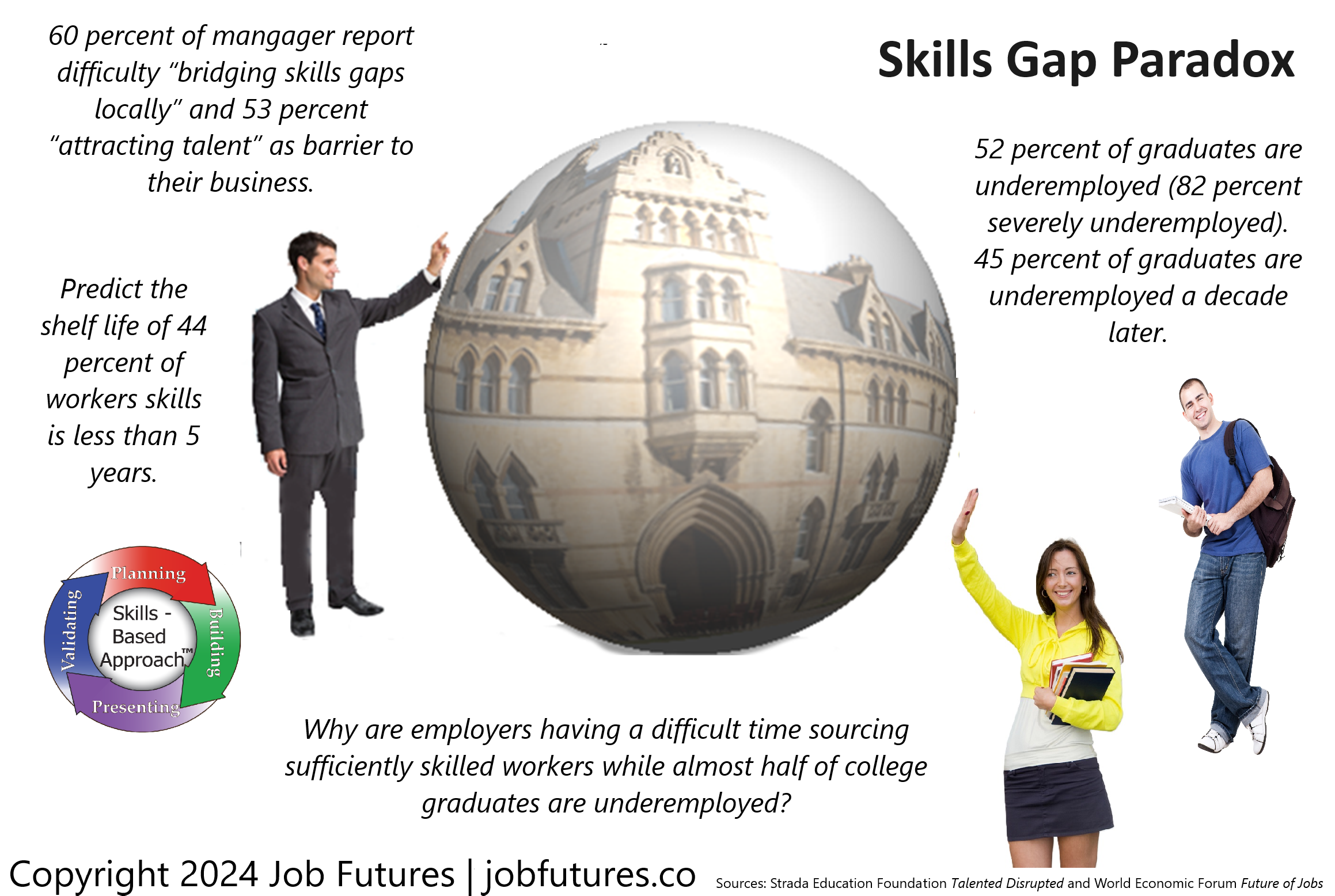Skills Gap Paradox
Why are employers having a difficult time sourcing sufficiently skilled workers while almost half of college graduates are underemployed?
According to the Talent Disrupted report published by Strada Education Foundation, a few of the alarming statistics include:
- 52 percent of graduates are underemployed (82 percent severely underemployed).
- 45 percent of graduates are underemployed a decade later.
A few of their general recommendations are:
- Do internships.
- Choose degrees employers are looking to hire.
- Get hired in a college level job in the first year after graduation.
This brings to front a significant disconnect between higher education and employers, but neither are all at fault.
As the report makes clear, it is difficult for a student graduating with an Art History degree to find a job commensurate with their knowledge – a student is sacrificing job placement for pursuit of knowledge on their own. Colleges might bear some responsibility for students who graduate in a quantitative field like engineering, business, information technology, or an in-demand trade.
Applying skills in internships and getting hired soon after graduation is critical. As stated in the Future of Jobs Report, managers predict the “shelf life of 44 percent of skills is less than 5 years”… the argument a degree provides lifetime knowledge and skills is no longer relevant.
Helping to prepare post secondary students is not always a clear expense businesses are willing to take on. But it seems plugging future skills gaps is a wise investment, so attracting talent does not become a barrier to their business.
